
by Mary | Oct 7, 2015 | Design News, Designing for Kids, Designing Public Areas, Interior Design

Barb Ellis at a chilly ground breaking ceremony.
What does a school board president do when they want to make sure their school is the best design it can be? Call r.o.i. Design!
Barb Ellis did just that.
Black River Elementary School is part of the Black River Public Schools, a public charter school. Until last April, their elementary school was meeting in portable classrooms on their campus. They moved the students to a temporary location and broke ground for their new school. Four months later, the students came back to their new beautiful school.
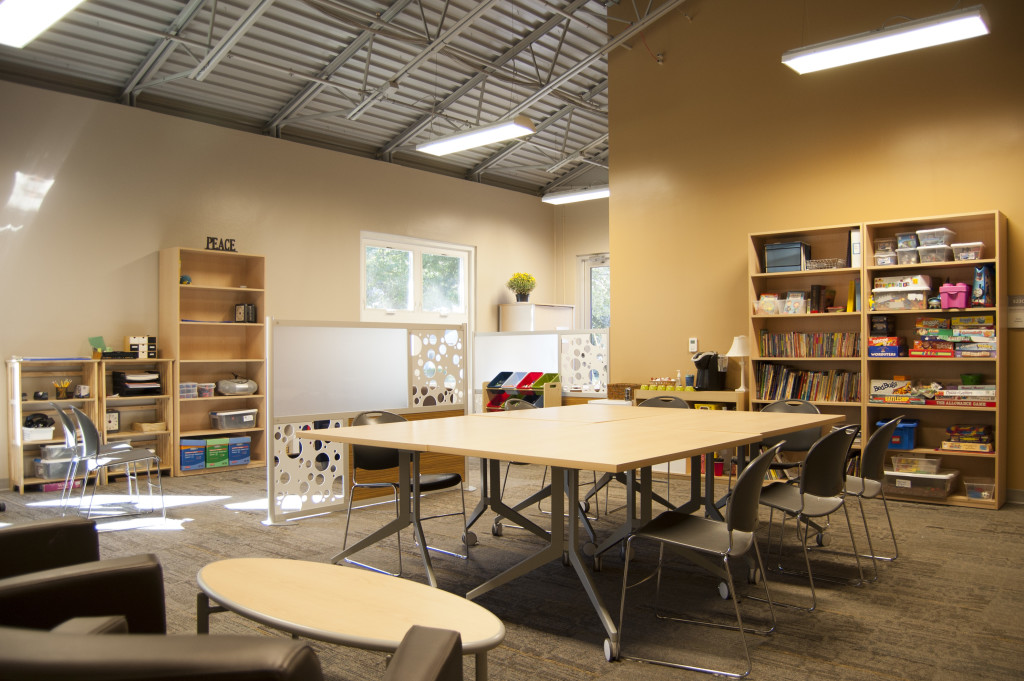
Special Education Offices and Classrooms
Barb and Black River were in the capable hands of Robert Doornbos, (RMD Architects), and Bob McFarlane, (Lakewood Construction), but the list of decisions to make and the broad spectrum of opinions threatened to slow the process down. We joined the team late in 2014 and ran alongside their process to aid in the imagining of the exterior and the interior design of the classrooms and auxiliary spaces.
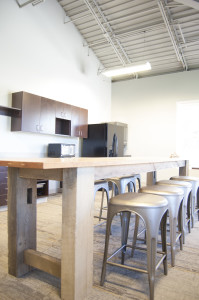
Teachers Break Room
We met with teachers early in the process and shared some ideas for iconic furnishings that would make their Montessori classrooms even more of an experience for their students.
Color schemes and the organization of color within the school was a collaborative process and the result has received “all A’s”.
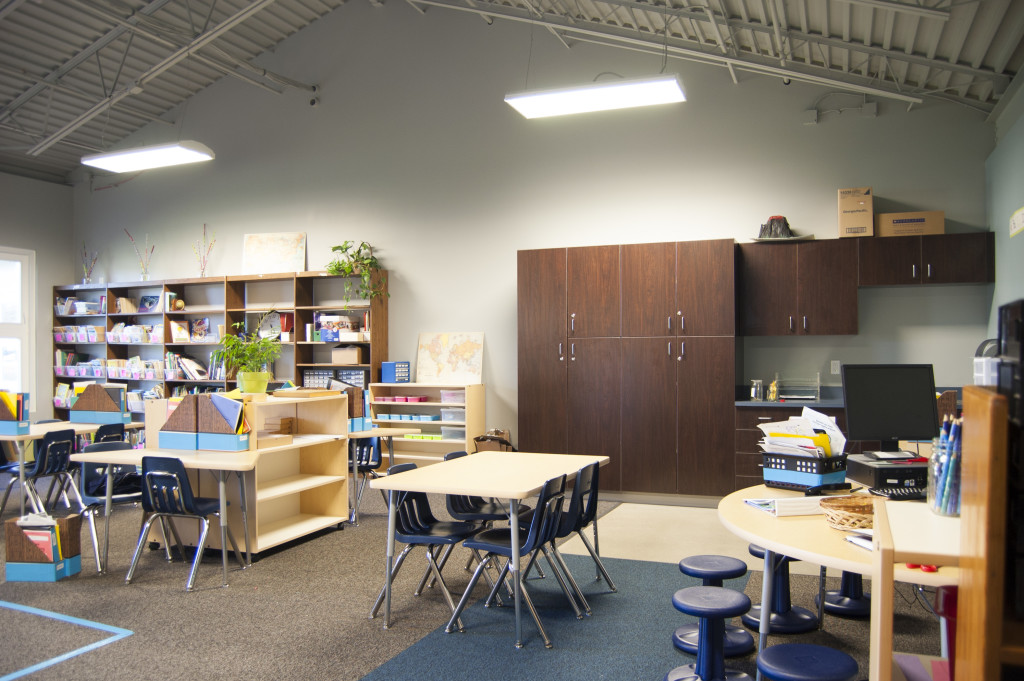
Grades 1 -2 Classrooms : Blue Accents with Dark Wood Casegoods
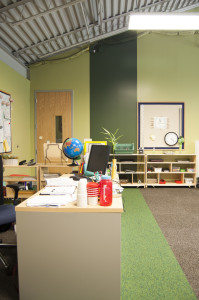
Grades 3-4: Green Accents and Light Casegoods
Barb and Mike Ellis have been friends and customers of r.o.i. Design for a long time and we appreciate them giving us this opportunity. (Spin Dance in Holland, MI and Grand Rapids, MI).
For more about Black River Schools and the building of the elementary school:
Black River Public Schools
Holland Sentinel Article about Black River Elementary

by Ryan | Oct 5, 2015 | Design News, Interior Design, Lighting Design
The LED lamp is fairly new to the market and consumers. Saving energy was part of their creation and one of the reasons we specify them. Initially we looked at lumen output as compared to an incandescent or fluorescent lamp. For example, a 100W incandescent, a 23W fluorescent and an 18W LED all are about 1600 lumens.
Lumens are still important to calculate, but now, as specifiers, we are looking at color not in temperature, like Kelvin, but CRI: Color Rendering Index. LED blands out colors. We want a high quality of 82 CRI at minimum. The majority of CRI is R1—R8 pastel colors. LED’s with a high R9 (red content) show better color quality. This is especially important in retail, healthcare (visibility of blood veins), grocery and art displays.
We are told LED’s will last 25 years! But during this time the lumens diminish and so does the color rendering. Your closet full of nice, white dress shirts were once bright white but as time goes on they will look dinged. An LED should have a minimum of 50,000 hours of life. Better thermal management results in a longer life. Look for LED’s with L70 or better light output and 82 CRI minimum.
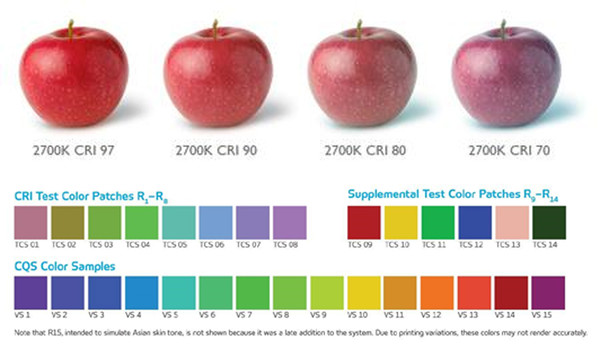
Look at lighting as a true value to your environment. r.o.i. = more than saving energy.
Information from the Crites, Tidey and Associates Lighting Forum XVI on September 15th and 16th.
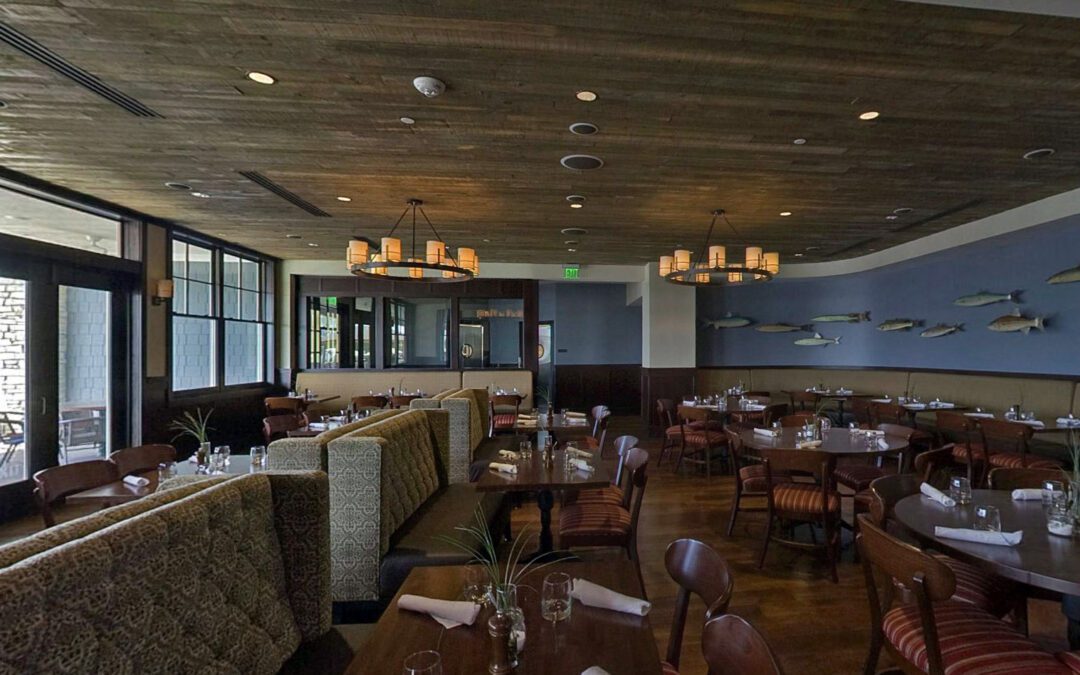
by Mary | Sep 6, 2015 | Construction, Hospitality Design, Interior Design, Restaurant Design, Retail Design
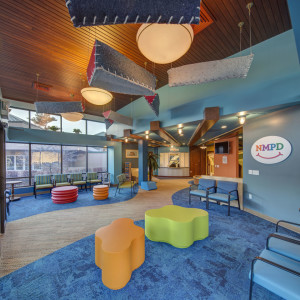
Northern Michigan Pediatric Dentistry. A design build team- r.o.i. Design was the interior designer.
Who is the design team?
The building architect, interior designer, site engineer, landscape architect, structural engineer, civil engineer, casegood designer, furniture designer, and art consultant all make up the design team.
Construction managers are dealing with a variety of team types:
One Stop Shopping
Large architect and engineering firms who offer “one stop shopping”, everything in one company, linear accountability. Convenient but not always transparent. When a design team has a bundle of work with a contractor, it is easier for the GM to negotiate changes since they are funneling a quantity of work to a firm.
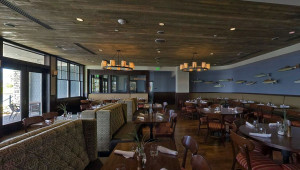
The Inn at Harbor Shores, r.o.i. Design was recommended by contractor as an industry specialist.
Industry Specialist
A key player (designer or architect) who offers unique experience in a construction type: charter schools, national retail chains, senior care, mid-scale hotels, higher education, specialty medical, etc. , who recommends a group of independents they or the contractor manages to fill out the roster of all the professional design requirements.
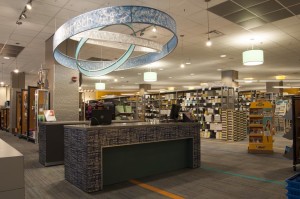
GVSU Laker Store, a customer directed design team. r.o.i. Design worked as planners and interior designers.
Customer Team
When there are pre-existing relationships that have to be managed and the contractor works with the customer to fill out the professional needs of the project with a variety of firms.
Design-Build
The “design-build” team is assembled by the contractor and the customer directs all design criteria to the contractor who then works with their choice of professionals to support planning, produce design, architecture, engineering and all it’s documentation.
So what is the ideal “design team”? It’s the one that works best for the project.
Experienced construction professionals understand that they can’t have just one process that will deliver the design on all their projects (unless the contractor only works with one building type). Experienced construction professionals know they have to have a variety of firms in their contact list and stay informed of changes in those firms, understanding their emerging strengths and successes on new projects.
##
r.o.i. Design works on several teams and team types. We understand the “R’s”: rates, relationships and relevance. We see successful design companies prosper when they can collaborate and adjust to changing criteria. We also see the importance of the construction manager who realizes the need for customers to be connected to the design process and their designers, and still be sure their budget and timeline are prioritized.
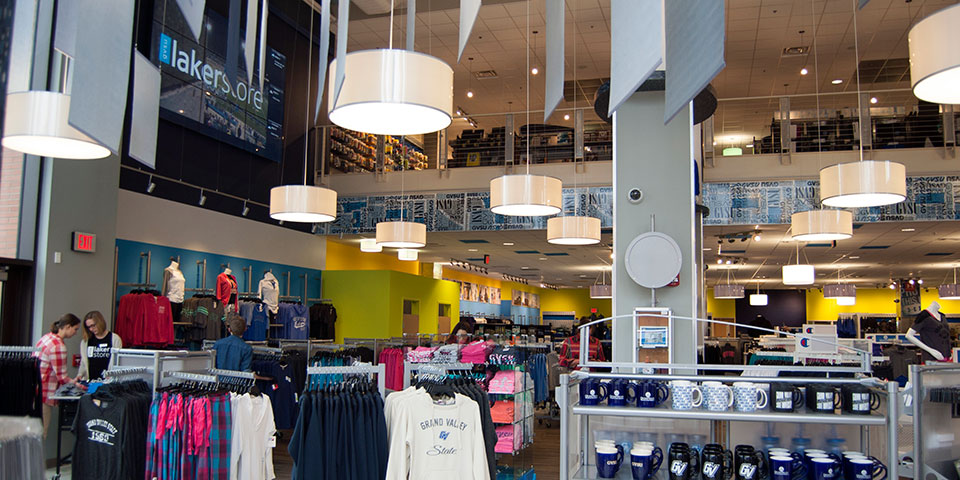
by Mary | Aug 17, 2015 | Design News, Interior Design, Project Management
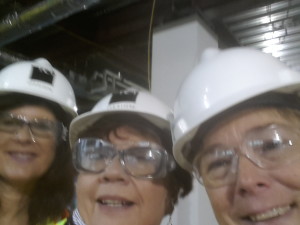
GVSU Marketplace Designers and Owners
r.o.i. Design knows that the customers experience of the design-build process will predict whether or not they will love their new space. It is so much more than having the perfect design or the “expert consultant” on the job.
When there is a great design-build team the outcome has a much greater chance of meeting and exceeding customer expectation of the finished product. There aren’t layers of concern and stress laid on top of the customer-team relationship, making the customer suspect and wary if they are going to get what was promised them or not.
A great design team also means efficiency which saves everyone budget dollars.
- When there is trust between team members it accelerates the customer’s confidence in all recommendations where ever they come from.
- When simple oversights are managed before they become a crisis or trigger change orders, customers are saved the awkward experience of finger pointing between team members.
- Real time communication is ongoing and a shared responsibility between owners, designers and contractors that is supported by protocol documentation verses solely relying on “the system”.
- Trust creates an attitude of flexibility in the process which allows great ideas and solutions to surface anytime in the process. When a design criteria is well understood and all parties buy in, it is only ego that keeps good ideas from being executed.
r.o.i. Design strives to be part of great design-build teams. For us that has happened when:
- Jobs we share could have started with any one of the groups, whether it is the contractor’s customer, the architect’s customer or our customer, we communicate to the customer early in the process who the team is and how we would like to work with them.
- Roles on a job are defined and respected, even when the customer challenges the structure, we represent the team.
- Building and maintaining relationships is everyone’s priority.
This week a manufacturing customer, remodeling a floor in their facility to create an innovation center commented to r.o.i. Design, “So you guys actually get along with this construction company. Our last remodeling project was a nightmare – the designer, architect and contractor kept blaming each other. They won’t ever be back.”
![The R.O.I. in Restaurant Remodels]()
by Ryan | Apr 1, 2015 | Branding, Design News, Interior Design, Restaurant Design
 Consistently serving great food is the best way for a restaurant owner to keep customers coming back for more. However, lighting, cleanliness, wall décor and even the ambience are all things that your customer will notice. To offer the ultimate dining experience you need to appeal to every sense of your target customer. Remodeling your restaurant is part of an overall plan to increase business. The improvement plan puts good food at the top of the list. Second is the overall cleanliness and service. We recommend a regular maintenance program for cleaning and an appropriate staff training method be well established before making any changes to the décor.
Consistently serving great food is the best way for a restaurant owner to keep customers coming back for more. However, lighting, cleanliness, wall décor and even the ambience are all things that your customer will notice. To offer the ultimate dining experience you need to appeal to every sense of your target customer. Remodeling your restaurant is part of an overall plan to increase business. The improvement plan puts good food at the top of the list. Second is the overall cleanliness and service. We recommend a regular maintenance program for cleaning and an appropriate staff training method be well established before making any changes to the décor.
If your food is great, your staff is friendly and you hold a high standard of cleanliness then you are ready to think about changes to the interior.
 Undergo this process with three things in mind:
Undergo this process with three things in mind:
- The Menu—The atmosphere you intend to create should be indicative of the food you serve. It should complement the menu. Your brand is the basis for the entire experience.
- Budget and Scope—An interesting surrounding does not need to cost a fortune. Unique and creative solutions are always available and can set you apart from the rest. It is important to do enough so customers see your investment but maintain restraint so costs can be covered within a reasonable period of time. That’s good business planning.
- Your Customer—Establish who they are and what appeals to them. A family of four and a 25 year old single male will have a very different set of ideals and it’s important for a restaurant owner to be conscientious of that.
Remodeling for a restaurant means at least one of the following:
- Changes in seating layouts and new furniture to fulfill the layout—The current trend consists of more bench seating, less traditional booths and more open café seating versus heavy dining arrangements.
- Changes in finishes, flooring, walls and ceilings—Restaurants are showing lighting brighter interiors with a wide variety of finishes within rooms.
- Changes in lighting—With the arrival of LED, clean and well lit rooms are a welcome “upgrade” for the customer.
- Changes in wall décor—Technology has made it possible to have a variety of custom décor options that are restaurant or site specific. Avoid residential décor solutions. Build the brand.
A return customer is a return on investment. Happy dining.

by Ryan | Dec 8, 2014 | Church Design, Designing Public Areas, Interior Design, Project Management
Schools, churches, foundations and other non-profit organizations need design as much as ‘for profit’ companies. But there is a difference:
- Non-profits are making legacy decisions; what they do in their organization has an impact beyond current staff tenure.
- They typically have to raise funds for a project alongside designing the project.
- The process in design and project management is slighting more “hands on”.
- And it always involves processing information with a larger group of people, i.e. a committee and volunteers.
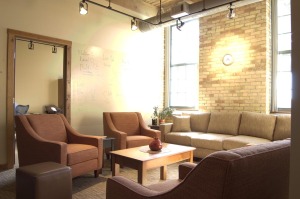
We worked with non profit Colossian Forum to design their new offices.
r.o.i. Design has experienced some methods and processes that are very helpful when working with non-profit organizations.
1. Helping the customer “see” designs
Most of the time the representatives of an organization are not experienced in developing designs, planning buildings or remodeling. Their only frame of reference might be their own home improvements. That means it is important to use as many visual tools as possible to describe designs and process; tours of other facilities, photos of other facilities and renderings of concepts prior to hard lining a design.
2. Managing expectations
All jobs start with the budget, but in these cases it is even more critical. Design professionals have to understand the resources available before designing begins.
The organization needs to understand the included steps to design. Laying out an overall schedule is helpful as well as establishing a habit of creating meeting minutes.
Technology is making sharing files much easier so information can be updated in real time.

Cafe at Life Stream Church in Allendale, MI
3. Advocacy
It is not uncommon for design professionals to act as facilitators and advocates for their clients as the design is priced and bids start coming in. Being able to maintain design intent and still meet budgets is crucial. A group of people from the organization was charged with executing work and have shared their excitement and ideas with the broader group. Being able to help them “deliver” on that promise is part of the job.
4. Philanthropy
Building trust between the organization and the design team is a necessary element to working with non-profits. That may require some above and beyond involvement or participation in their activities.
Demonstrating an understanding of giving and how it furthers the mission of the organization establishes a common ground. A building or remodeling project is an opportunity to get people involved and teach others the lessons of philanthropy.
r.o.i. Design has had several non-profits as customers, including Grand Valley State University, Meadow Brook Medical Care Facility, Grand Rapids Child Discovery Center, Spring Hill Camp, Colossian Forum, Grandvue Medical Care Facility, Theological Book Network and Wesleyan Conference West Michigan.
We have been pleased to work for several churches, including Life Stream (Allendale, MI), Crossroads Wesleyan (Imperial, Nebraska), Kentwood Community (Wyoming, MI), Hope Reformed (Holland, MI) and Sonrise (Ft. Wayne, IN).
















 Undergo this process with three things in mind:
Undergo this process with three things in mind:

